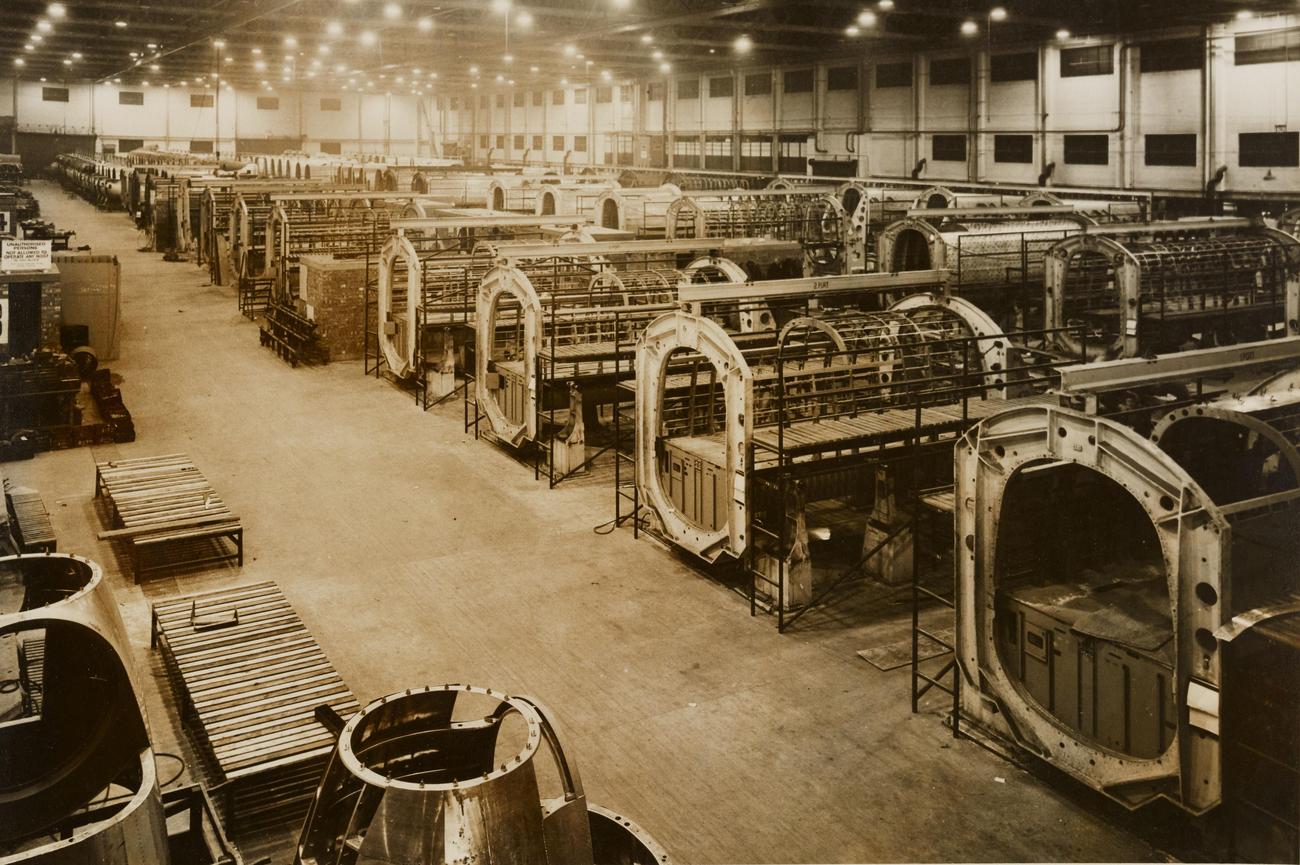Welcome to the intriguing world of manufacturing processes for aluminum oxide! In this article, we will dive deep into the realm of advanced techniques that bring this versatile material to life. As a highly proficient SEO content writer with a passion for engineering and manufacturing, I am thrilled to guide you through the intricacies of optimizing aluminum oxide production. So, buckle up and get ready to discover the innovative methods and ingenious approaches that revolutionize the manufacturing processes of this extraordinary material.

Manufacturing Processes for Aluminum Oxide
Aluminum oxide, also known as alumina, is a crucial material in various industries due to its exceptional physical and chemical properties. From its use as an abrasive material to its application as a replacement for industrial diamonds, aluminum oxide plays a vital role in numerous manufacturing processes. In this article, we will explore the advanced manufacturing processes involved in producing high-quality aluminum oxide and how they contribute to its enhanced properties and performance.
Sol-Gel Synthesis: Unleashing the Potential of Aluminum Oxide
One of the innovative manufacturing processes for aluminum oxide is sol-gel synthesis. This technique involves the creation of a colloidal suspension, known as a sol, which undergoes a gelation process to form a solid material. In the case of aluminum oxide, the starting materials, such as aluminum alkoxides or aluminum salts, are dissolved in a solvent to form the sol.
Through careful control of temperature and concentration, the sol gradually transforms into a gel, which can then be further processed to obtain the desired alumina structure. This process enables the production of aluminum oxide with tailored properties, such as specific surface area, pore size distribution, and crystalline phase composition. The sol-gel synthesis technique offers excellent control over the final product, allowing manufacturers to fine-tune the characteristics of aluminum oxide for specific applications.
Sol-gel synthesis empowers manufacturers to engineer aluminum oxide with precise properties, opening up a world of possibilities in various industries.
Sintering: Fusing Aluminum Oxide for Enhanced Strength
Sintering is another crucial manufacturing process utilized in the production of aluminum oxide. This process involves compacting aluminum oxide powder and subjecting it to high temperatures, causing the particles to coalesce and form a solid mass. The resulting material exhibits enhanced strength, hardness, and thermal stability compared to its initial powdered form.
During sintering, the aluminum oxide particles undergo diffusion and rearrangement, leading to a denser structure with reduced porosity. The controlled application of heat allows for the elimination of voids and the formation of strong bonds between particles, resulting in the desired mechanical properties. Furthermore, the sintering process can be optimized to control grain size and crystallographic orientation, further enhancing the performance of aluminum oxide.
Sintering imparts remarkable strength and durability to aluminum oxide, making it highly suitable for demanding applications in industries such as aerospace and automotive.
Chemical Vapor Deposition (CVD): A Precise Coating Technique
Chemical vapor deposition (CVD) is a manufacturing process used to deposit a thin layer of aluminum oxide onto a substrate surface. In this technique, volatile precursor molecules containing aluminum and oxygen are introduced into a chamber, where they decompose and react on the surface, resulting in the deposition of aluminum oxide.
CVD offers precise control over the coating thickness, composition, and structure of aluminum oxide. By adjusting various process parameters such as temperature, pressure, and precursor concentration, manufacturers can tailor the properties of the deposited aluminum oxide to meet specific requirements. CVD coatings can provide improved surface hardness, wear resistance, corrosion protection, and thermal barrier properties, among others.
Chemical vapor deposition allows manufacturers to create thin and precise aluminum oxide coatings, adding beneficial properties to various materials and components.
Merits and Limitations of Different Manufacturing Processes:
When considering the advanced manufacturing processes for aluminum oxide, it is important to weigh the pros and cons of each technique. Here is a comparison:
Sol-Gel Synthesis:
Pros:
- Provides precise control over alumina properties.
- Facilitates the production of tailor-made materials for specific applications.
Cons:
- Requires careful handling of chemicals and solvents.
- Longer processing time compared to other techniques.
Sintering:
Pros:
- Enhances mechanical and thermal properties of aluminum oxide.
- Enables production of bulk materials with high strength.
Cons:
- Can result in dimensional changes and residual stresses.
- Suitable mainly for producing solid, monolithic structures.
Chemical Vapor Deposition:
Pros:
- Allows for precise deposition of thin aluminum oxide layers.
- Offers versatility in coating various substrates.
Cons:
- Requires specialized equipment and expertise.
- Limited to surface coating applications.
Understanding the merits and limitations of different manufacturing processes helps manufacturers select the most suitable technique for their specific aluminum oxide production needs.
In conclusion, the world of aluminum oxide manufacturing processes is vast and offers exciting opportunities for tailoring its properties. Sol-gel synthesis, sintering, and chemical vapor deposition are just a few of the advanced techniques that empower manufacturers to create high-quality aluminum oxide for numerous industrial applications. By choosing the right manufacturing process, manufacturers can optimize the physical and chemical attributes of aluminum oxide, ensuring its superior performance in various demanding environments.
So, whether it’s developing abrasives, enhancing mechanical components, or revolutionizing coatings, manufacturers can rely on advanced manufacturing processes to unleash the true potential of aluminum oxide.
Please note: The content provided here is for informational purposes only and should not be considered as professional advice. Safety guidelines and applicable regulations must be followed when engaging in any manufacturing processes.
Aluminum oxide is a fascinating compound that has a multitude of interesting properties. Did you know that it is commonly used as an abrasive due to its hardness and durability? It is also known for its high melting point, which makes it suitable for applications in extreme temperatures. Moreover, aluminum oxide is a popular choice for coating materials like sandpaper, as it provides a protective layer that enhances their longevity. If you want to dive deeper into the fun facts about aluminum oxide, click here: fun facts about aluminum oxide.

FAQ
Q: What is the Bayer process for producing aluminum oxide?
A: The Bayer process involves attacking bauxite with soda at high temperature and pressure to produce sodium aluminate, which is then purified, diluted, and cooled to precipitate hydrated aluminum oxide. This hydrated form is further processed to obtain alumina, a white powder.
Q: How is aluminum extracted from alumina?
A: Aluminum can be extracted from alumina through electrolysis. The alumina is melted and subjected to an electrical current, which causes the aluminum to separate from the oxygen and collect at the cathode.
Q: What are the primary methods of producing aluminum?
A: The primary production of aluminum involves mining bauxite deposits, refining it into pure aluminum oxide (alumina), and then performing electrometallurgical processing through electrolysis to produce aluminum metal.
Q: What are the uses of aluminum oxide?
A: Aluminum oxide, also known as alumina, has various uses. It can be used as an abrasive material, for example, in sandpaper or as a substitute for industrial diamonds. Additionally, it finds applications in the production of ceramics, glass, and as a catalyst in chemical reactions.
Q: What environmental impacts are associated with alumina production?
A: The production of alumina generates a large amount of bauxite residue, which can have environmental impacts if not properly disposed of. This residue can contain trace amounts of toxic materials and may require careful management to prevent contamination of soil and water sources.
- SYBAU See You Baby Meaning: Gen Z Slang Evolves - July 1, 2025
- Unlock Your Inner Youth: Lifestyle Secrets for a Vibrant Life - July 1, 2025
- Decode SYBAU Meaning: Gen Z Slang Explained - July 1, 2025






